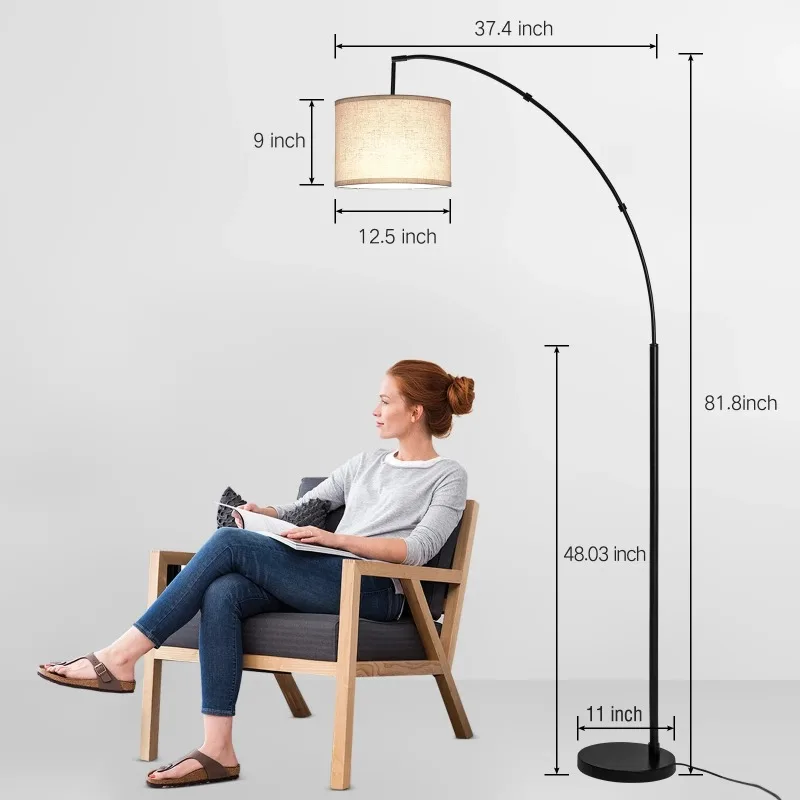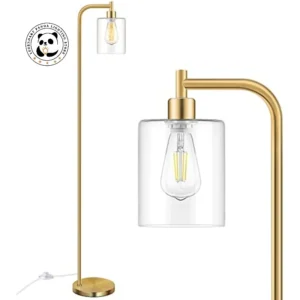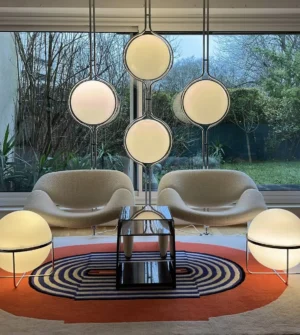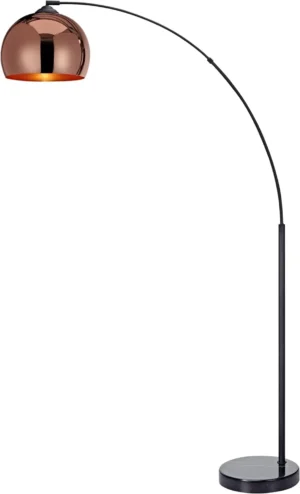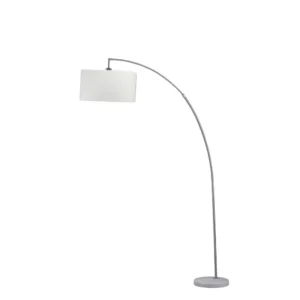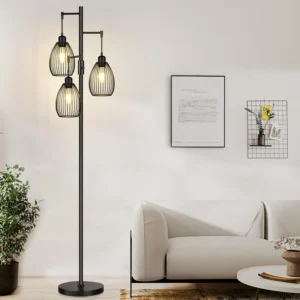Introduction to Gas Discharge Lighting Technology
Gas discharge lighting represents a fundamental technology that produces light by passing electricity through gas. This principle forms the basis for two major categories of lighting devices: flash lamps and arc lamps. While both use the same basic concept of electricity flowing through gas to generate light, they differ significantly in how they operate and what purposes they serve.
Flash lamps create brief, intense bursts of light, while arc lamps provide continuous illumination. This distinction has shaped their evolution and applications throughout lighting history. From the dramatic flash of a camera to the steady beam of a theater spotlight, these technologies have become essential across numerous industries.
Understanding the differences between flash lamps and arc lamps is crucial for selecting the right lighting solution for specific needs. Both technologies have unique characteristics that make them suitable for distinct applications ranging from photography to scientific research and interior lighting.
As lighting technology continues to evolve, the principles behind choosing the perfect arc floor lamp remain relevant for both technical applications and home decor.
What is a Flash Lamp?
A flash lamp, also known as a flashtube, is a specialized gas discharge light source designed to produce extremely bright, brief pulses of light. It consists of a sealed tube made from glass or quartz containing a noble gas (typically xenon or krypton) with electrodes at each end.
The defining characteristic of a flash lamp is its pulsed operation. Unlike continuous light sources, flash lamps deliver their energy in short bursts, creating momentary illumination of very high intensity. This is accomplished through a capacitor-based discharge system, where electrical energy is stored and then rapidly released through the lamp.
Key features of flash lamps include:
- High-intensity light output measured in thousands to millions of lumens
- Very short duration pulses (typically microseconds to milliseconds)
- Capacitor-based energy storage and discharge
- Noble gas filling (usually xenon) that produces broadband white light
- Trigger electrode or wire for initiating the discharge
The light generation process begins when a high-voltage trigger pulse ionizes the gas inside the tube, creating a conductive path. This allows the main capacitor to discharge through the gas, causing it to heat rapidly and emit an intense flash of light. The spectral output is typically broadband, with significant ultraviolet content depending on the envelope material and gas mixture.
Flash lamps can achieve peak power outputs ranging from kilowatts to megawatts during their brief pulses, making them suitable for applications requiring momentary high-intensity illumination.
The disadvantages of traditional lighting systems compared to flash technology include limitations in achieving the same peak brightness and precise timing control.
Flash Lamp Construction and Components
The construction of a flash lamp follows specific design principles to handle the extreme conditions created during discharge. Each component serves a critical function in enabling the lamp’s high-intensity pulsed operation.
The central element is a hermetically sealed tube made from quartz or specialized glass. Quartz is frequently preferred for its superior thermal shock resistance and UV transmission properties. Typical tube diameters range from 5 to 25 millimeters, while the electrode spacing can vary from 1 to 20 inches depending on the application.
The electrodes are typically made of tungsten or tungsten alloys specially designed to withstand the high current pulses that occur during discharge. These electrodes are sealed into the ends of the tube and connected to the external circuit. Their shape is often rounded or cylindrical to distribute current evenly and minimize erosion.
The gas filling is carefully selected based on the desired spectral output and operating characteristics. Xenon is most common due to its excellent light emission properties, but krypton may be used in some applications. The gas pressure typically ranges from 100 to 1000 torr (about 1.9 to 19.3 psi), with higher pressures generally producing higher intensity light.
A trigger mechanism is essential for initiating the discharge. This can be:
- An external trigger wire wrapped around the tube
- An internal trigger electrode embedded in the glass
- A series trigger design that uses the main electrodes
The envelope material must balance multiple requirements including:
- Sufficient strength to contain gas pressure
- Thermal shock resistance to handle rapid temperature changes
- Appropriate UV transmission characteristics for the intended application
Understanding these construction elements provides insight into how flash lamp design differs from perfect arc floor lamp guide principles, which focus on sustained rather than pulsed illumination.
Flash Lamp Working Principle
The operation of a flash lamp follows a precise sequence that transforms stored electrical energy into a brilliant pulse of light:
Energy Storage: A power supply charges a capacitor to a high voltage (typically 300-3000 volts), storing the energy that will create the flash.
Triggering: When the flash is needed, a high-voltage pulse (several kilovolts) is applied to the trigger electrode, creating a small ionized path in the gas.
Breakdown Phase: This initial ionization lowers the resistance of the gas between the main electrodes, allowing current to begin flowing through the tube.
Main Discharge: With the ionized path established, the capacitor rapidly discharges through the gas, causing current to surge (often hundreds to thousands of amperes).
Light Emission: The massive current flow energizes atoms in the gas, elevating their electrons to higher energy states. As these electrons return to their ground state, they release energy as photons (light).
Termination: The flash ends naturally when the capacitor’s energy is depleted, typically within microseconds to milliseconds.
Cooling and Recovery: After the discharge, the lamp cools through both radiation and conduction. The gas de-ionizes, and the lamp returns to its non-conductive state.
The energy level for typical flash lamps ranges from a few joules in small photographic flashes to several kilojoules in large scientific applications. This energy determines the brightness and duration of the flash.
The entire process happens extremely rapidly, with the discharge current rising to peak values in microseconds. This rapid energy release is what creates the distinctive intense but brief illumination that characterizes flash lamp operation.
What is an Arc Lamp?
An arc lamp is a lighting device that generates light through a sustained electric arc between two electrodes. Unlike flash lamps, arc lamps are designed to operate continuously, providing steady illumination for extended periods. The light comes from the glowing plasma created by the electric arc passing through a gas or vapor medium.
The fundamental principle of an arc lamp involves maintaining a stable electrical discharge between two electrodes inside either a sealed chamber or, in some historical designs, open air. This continuous arc creates a high-temperature plasma that emits bright light with specific spectral characteristics determined by the gas mixture and electrode materials.
Key features of arc lamps include:
- Continuous light output rather than pulsed operation
- Stable arc maintained between two electrodes
- Operating currents typically ranging from 1 to 100 amperes
- Power consumption from hundreds of watts to several kilowatts
- Specialized power supplies with current regulation for arc stability
- Characteristic spectral emissions depending on gas and electrode composition
Arc lamps require a specialized power supply that provides an initial high voltage to establish the arc, then transitions to a lower voltage with current regulation to maintain stable operation. This differs significantly from the capacitor-based discharge system of flash lamps.
The advantages of arc lamps in modern lighting include their ability to provide high-intensity continuous illumination with specific spectral characteristics, making them valuable for applications requiring sustained brightness.

Arc Lamp Construction and Components
Arc lamps feature distinctive construction elements designed to support continuous operation and manage the intense heat generated during use. These design choices differentiate them significantly from flash lamps.
The electrode configuration varies based on the lamp type and application. Common designs include:
- Rod-shaped cylindrical electrodes (often in xenon short-arc lamps)
- Pointed cathodes with button-shaped anodes (in some high-intensity discharge lamps)
- Carbon rods (in traditional carbon arc lamps)
Electrode materials are selected for their durability at high temperatures and include tungsten, thoriated tungsten (tungsten with thorium oxide added for better electron emission), and carbon. The distance between electrodes typically ranges from a few millimeters in compact designs to several centimeters in higher-power models.
The envelope or chamber containing the arc can be made from:
- Quartz for excellent thermal resistance and UV transmission
- Ceramic materials for specialized high-temperature applications
- Glass with special additives for specific wavelength filtering
Gas or vapor filling options include:
- Xenon for broadband white light with good color rendering
- Mercury vapor for high efficiency but with distinctive spectral lines
- Metal halide mixtures for improved color characteristics
- Specialized gas combinations for specific spectral outputs
Many arc lamps incorporate reflectors or focusing elements to direct the light output efficiently. Cooling systems are also essential components in high-power designs, with methods ranging from convection cooling in smaller lamps to forced-air or liquid cooling in larger units.
The operating temperatures of arc lamps are extremely high, typically 1000-6000°C (1832-10832°F) at the arc itself, requiring careful thermal management throughout the lamp design.
Understanding the historical context and evolution of these lighting technologies provides valuable perspective on how modern lighting has developed, as detailed in resources about the purpose and evolution of arc lamps.
Arc Lamp Working Principle
The operation of an arc lamp involves maintaining a stable electrical discharge through a controlled process:
Circuit Preparation: The lamp is connected to a specialized power supply that includes a ballast or current-limiting device. This is crucial because the arc has negative resistance characteristics—meaning current would increase uncontrollably without limitation.
Ignition: The arc is initiated with a high-voltage pulse (several kilovolts) that breaks down the gas between the electrodes, creating an initial ionized path.
Arc Establishment: Once the gas becomes conductive, current begins to flow through the ionized pathway, heating the electrodes and surrounding gas.
Transition Phase: The power supply transitions from the high-voltage ignition mode to a lower-voltage, current-regulated operating mode (typically 20-100 volts depending on lamp type).
Steady-State Operation: After warm-up (which can take seconds to minutes), the arc stabilizes as the electrode temperatures and gas ionization reach equilibrium. The power supply maintains constant current to ensure stable light output.
Continuous Light Generation: The sustained arc creates a high-temperature plasma that emits light continuously through both incandescence (heat-driven light) and specific atomic emission lines (characteristic of the gases present).
Thermal Management: Heat generated must be continuously removed through the lamp’s cooling system to prevent overheating and maintain optimal operating conditions.
The continuous operation of arc lamps creates specific challenges not present in flash lamps, particularly around heat management, electrode wear, and maintaining arc stability. These challenges require specialized power supplies with precise current regulation to ensure consistent light output and maximize lamp life.
Key Differences: Flash Lamp vs. Arc Lamp
| Characteristic | Flash Lamp | Arc Lamp |
|---|---|---|
| Light Output | Brief, intense pulses | Continuous, sustained illumination |
| Operation Mode | Transient discharge | Sustained electric arc |
| Current Profile | High peak current (hundreds to thousands of amperes) | Moderate continuous current (1-100 amperes) |
| Voltage Requirements | High charging voltage (300-3000V) with capacitor discharge | Initial high ignition voltage, lower operating voltage (20-100V) |
| Electrode Design | Typically rounded/cylindrical for pulse handling | Often pointed cathode/button anode for sustained arc |
| Energy Source | Capacitor-based storage and discharge | Continuous power supply with current regulation |
| Heat Management | Minimal cooling between pulses | Active cooling systems for continuous heat |
| Typical Gases | Xenon, krypton at moderate pressure | Xenon, mercury vapor, metal halides |
| Light Duration | Microseconds to milliseconds | Continuous for hours/days |
| Spectral Output | Broadband with significant UV content | Can be broadband or line-specific depending on gas/metals |
| Efficiency | High peak efficiency during pulse | Moderate continuous efficiency |
| Lifetime Limiting Factors | Number of flashes (electrode erosion) | Operating hours (electrode wear, envelope darkening) |
The fundamental difference between these technologies lies in their temporal characteristics: flash lamps deliver all their energy in a brief moment, while arc lamps distribute similar energy over extended periods. This creates dramatically different peak intensities and operating requirements.
Flash lamps typically operate at much higher peak currents and power levels than arc lamps, but for extremely brief durations. In contrast, arc lamps must manage thermal loads continuously, requiring robust cooling systems to maintain stable operation over their lifespan of arc lamp operating hours.
These differences directly influence the applications each technology is suited for and the supporting equipment required for proper operation.
Applications of Flash Lamps
Flash lamp technology has found its way into diverse fields where brief, intense light pulses provide unique capabilities:
Photography Applications:
* Consumer camera flashes for illuminating scenes
* Professional studio strobes for controlled lighting
* High-speed photography capturing ultrafast events
* Stroboscopic photography for motion analysis
Scientific Applications:
* Spectroscopy requiring precise light pulses
* Fluorescence analysis with specific excitation wavelengths
* Time-resolved measurements of fast-changing phenomena
* Optical pumping in research instruments
Laser Pumping:
* Excitation source for solid-state lasers (Nd:YAG, Ruby)
* Medical laser systems for surgical applications
* Industrial laser systems for material processing
* Pulsed laser deposition systems
Medical and Aesthetic Applications:
* Intense Pulsed Light (IPL) systems for hair removal
* Dermatological treatments targeting specific skin conditions
* Photodynamic therapy activating light-sensitive drugs
* Vision research using precisely timed stimuli
Industrial Applications:
* High-speed imaging of manufacturing processes
* Stroboscopic inspection of moving machinery
* Materials testing with high-intensity light pulses
* Flash photolysis for chemical reaction studies
The specific flash lamp requirements vary significantly across these applications. For example, photography typically uses xenon flash tubes with pulse durations in the millisecond range, while laser pumping may require specialized krypton lamps with microsecond pulses delivered at precise repetition rates.
Modern lighting technology continues to evolve, with LED arc floor lamp designs drawing inspiration from traditional lighting principles while offering energy efficiency and longevity advantages.
Applications of Arc Lamps
Arc lamp technology serves numerous fields where continuous, high-intensity illumination is essential:
Projection Systems:
* Cinema projectors requiring exceptionally bright light sources
* IMAX and large-format projection systems
* Theater spotlights and followspots
* Architectural projection mapping
Scientific Instruments:
* Microscope illumination systems requiring stable brightness
* Analytical instruments needing specific spectral characteristics
* Solar simulators for materials testing
* Specialized spectrophotometers and optical instruments
Outdoor and Specialized Lighting:
* High-power searchlights with extreme throw distance
* Stadium and arena lighting fixtures
* Airport runway lighting systems
* Film and television production lighting
Laboratory and Industrial Applications:
* UV curing systems for adhesives and coatings
* Materials testing under controlled light conditions
* Photo-chemical processing
* Growth chambers requiring specific light spectra
Continuous-Wave Laser Pumping:
* Pumping sources for specialized continuous lasers
* Medical laser systems requiring stable output
* Industrial processing laser systems
* Research instruments with specific wavelength requirements
Different arc lamp types serve specific purposes within these categories. Xenon short-arc lamps dominate cinema projection and solar simulation due to their sunlight-like spectrum. Mercury vapor and metal halide arc lamps find use in applications where energy efficiency and specific spectral lines are advantageous.
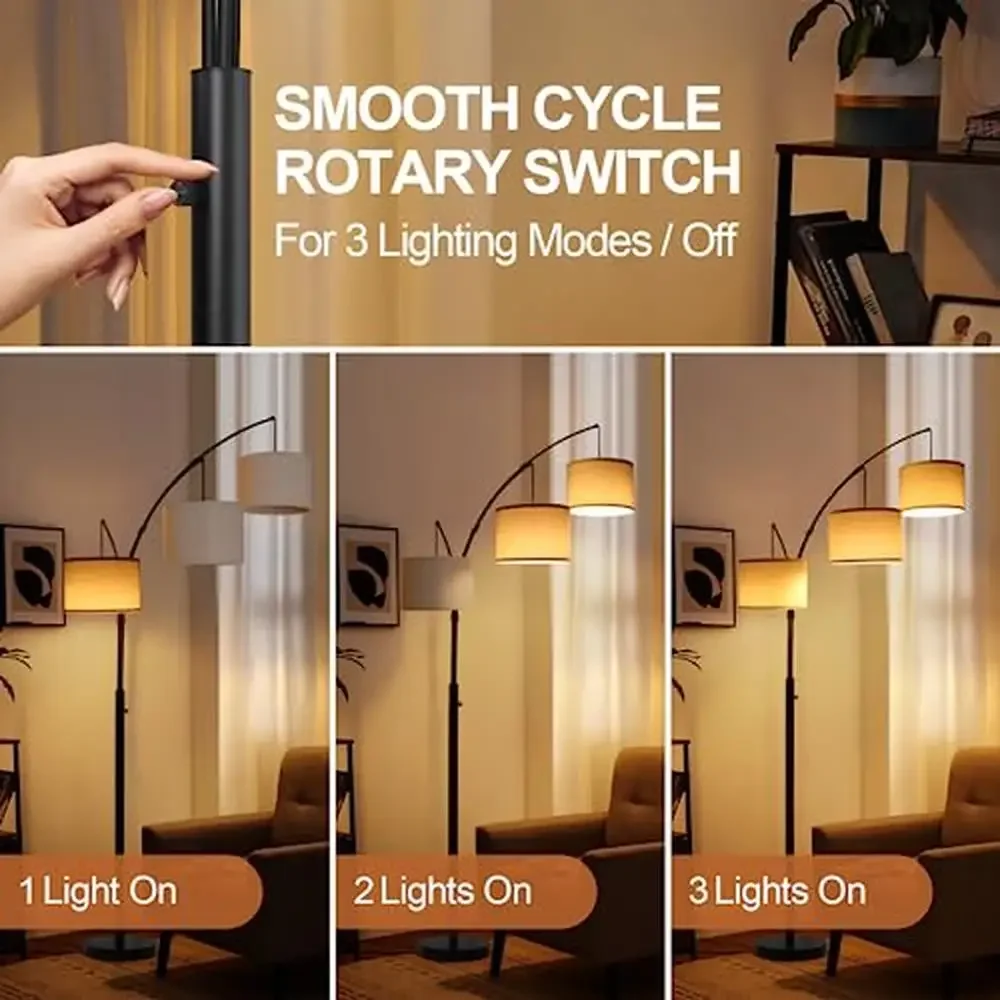
For home environments, dimmable arc floor lamp options provide flexible lighting inspired by the principles of arc technology while offering modern convenience features.
Advantages and Disadvantages of Flash Lamps
Advantages:
* Extremely high peak intensity capability, delivering maximum brightness when needed
* Precise timing control allowing synchronization with other equipment or events
* Efficient energy conversion for brief illumination needs
* Wide spectral output similar to daylight when using xenon
* Minimal heat accumulation in the surrounding environment due to low duty cycle
* Compact size relative to their peak light output capability
Disadvantages:
* Limited lifetime measured in number of flashes (typically thousands to millions)
* Complex trigger and power circuitry requirements for proper operation
* High voltage safety concerns requiring careful insulation and shielding
* Potential for catastrophic failure if operated beyond specifications
* Limited average power capability compared to continuous sources
* Specialized power supplies needed for efficient charging and discharge
* Electromagnetic interference generation during discharge
Flash lamps excel in applications requiring brief, controlled bursts of light rather than continuous illumination. Their efficiency for pulsed operation can reach 40-60% in converting electrical energy to light during the flash, though their overall efficiency when considering standby power is much lower.
Understanding these trade-offs is essential when evaluating whether flash lamp technology or alternatives like modern arc floor lamps for good lighting are more suitable for specific applications.
Advantages and Disadvantages of Arc Lamps
Advantages:
* High continuous brightness suitable for sustained illumination needs
* Stable output after warm-up period providing consistent lighting
* Long operational life for modern designs (hundreds to thousands of hours)
* Broad spectrum or specific line emissions available based on gas/metal selection
* Established technology with predictable performance characteristics
* High color rendering capabilities with proper gas mixtures
* Excellent optical control due to relatively small arc size
Disadvantages:
* Significant heat generation requiring effective cooling systems
* UV and IR radiation hazards necessitating appropriate filtering
* Electrode degradation over time affecting light output and color
* Warm-up period required for full brightness and spectral stability
* Power supply complexity for maintaining optimal arc conditions
* Relatively low overall efficiency (typically 15-40% depending on type)
* Limited dimming capability in many designs
Arc lamps represent mature technology with well-understood characteristics and limitations. Their ability to produce high-intensity continuous light from a relatively small source makes them valuable for applications where light must be precisely controlled and directed.
Modern improvements in arc lamp design have addressed historical limitations, extending lifetimes and improving efficiency, though they still face competition from newer technologies like LEDs for many applications.
Safety Considerations When Working with Discharge Lamps
Working with both flash lamps and arc lamps requires awareness of several important safety hazards:
Electrical Hazards:
* High voltage components can cause severe or fatal electric shock
* Capacitors in flash systems can retain dangerous charges even when powered off
* Always discharge capacitors properly before servicing equipment
* Use insulated tools and follow lockout/tagout procedures
Optical Radiation Dangers:
* Both lamp types can emit harmful ultraviolet (UV) radiation
* Intense visible light can cause eye damage without proper filtering
* Infrared (IR) radiation may cause burns without being visible
* Always use appropriate eye protection with proper UV/IR filtering
Explosion Risks:
* Internal gas pressure can cause violent failures if lamps are mishandled
* Never handle hot lamps or exceed manufacturer power ratings
* Some lamps require protective covers or housings during operation
* Follow proper disposal procedures for damaged lamps
Thermal Hazards:
* Arc lamps operate at extremely high temperatures (thousands of degrees)
* Allow sufficient cooling time before handling components
* Ensure adequate ventilation and cooling for continuous operation
* Keep flammable materials away from lamp housings
Mercury Hazards:
* Mercury-containing arc lamps require special handling and disposal
* Broken lamps may release toxic mercury vapor
* Follow environmental regulations for proper disposal
* Have mercury spill kits available where applicable
Recommended Safety Equipment:
* Appropriate eye protection with UV filtering
* Heat-resistant gloves when handling components
* Face shields for high-power lamp work
* Proper ventilation or fume extraction equipment
Always consult manufacturer safety guidelines and relevant safety standards before working with discharge lamp technologies. Many modern arc floor lamps incorporate safety features to mitigate these risks in home environments.
Selecting the Right Lamp for Your Application
Choosing between flash lamp and arc lamp technology requires careful consideration of your specific application requirements:
Light Duration Needs:
* For momentary illumination (microseconds to milliseconds): Flash lamp
* For continuous operation (minutes to hours): Arc lamp
* For rapid cycling (seconds on/off): Consider specialized arc lamps or alternatives
Spectral Requirements:
* For sunlight-like broad spectrum: Xenon flash or arc lamps
* For specific spectral lines: Mercury or metal halide arc lamps
* For UV-rich output: Special quartz envelope flash or arc lamps
* For minimal UV: Glass-filtered arc lamps or alternative technologies
Power and Intensity Requirements:
* For highest peak brightness: Flash lamps
* For highest continuous brightness: High-power arc lamps
* For moderate continuous illumination: Smaller arc lamps or alternatives
Synchronization Needs:
* For precise timing with other equipment: Flash lamps
* For stable, constant illumination: Arc lamps
Space and Cooling Considerations:
* Limited space with minimal cooling: Low duty-cycle flash lamps
* Adequate cooling available: Arc lamps or high-repetition flash lamps
Budget and Operational Factors:
* Initial cost vs. operational lifetime
* Replacement frequency and cost
* Power consumption and efficiency
* Specialized power supply requirements
For applications where the choice isn’t obvious, consulting with lighting specialists can help identify the optimal solution, potentially including hybrid approaches or alternative technologies like LEDs for some uses.
When evaluating options, consider not just current needs but also future requirements, as selecting the right technology platform can provide flexibility as your application evolves.
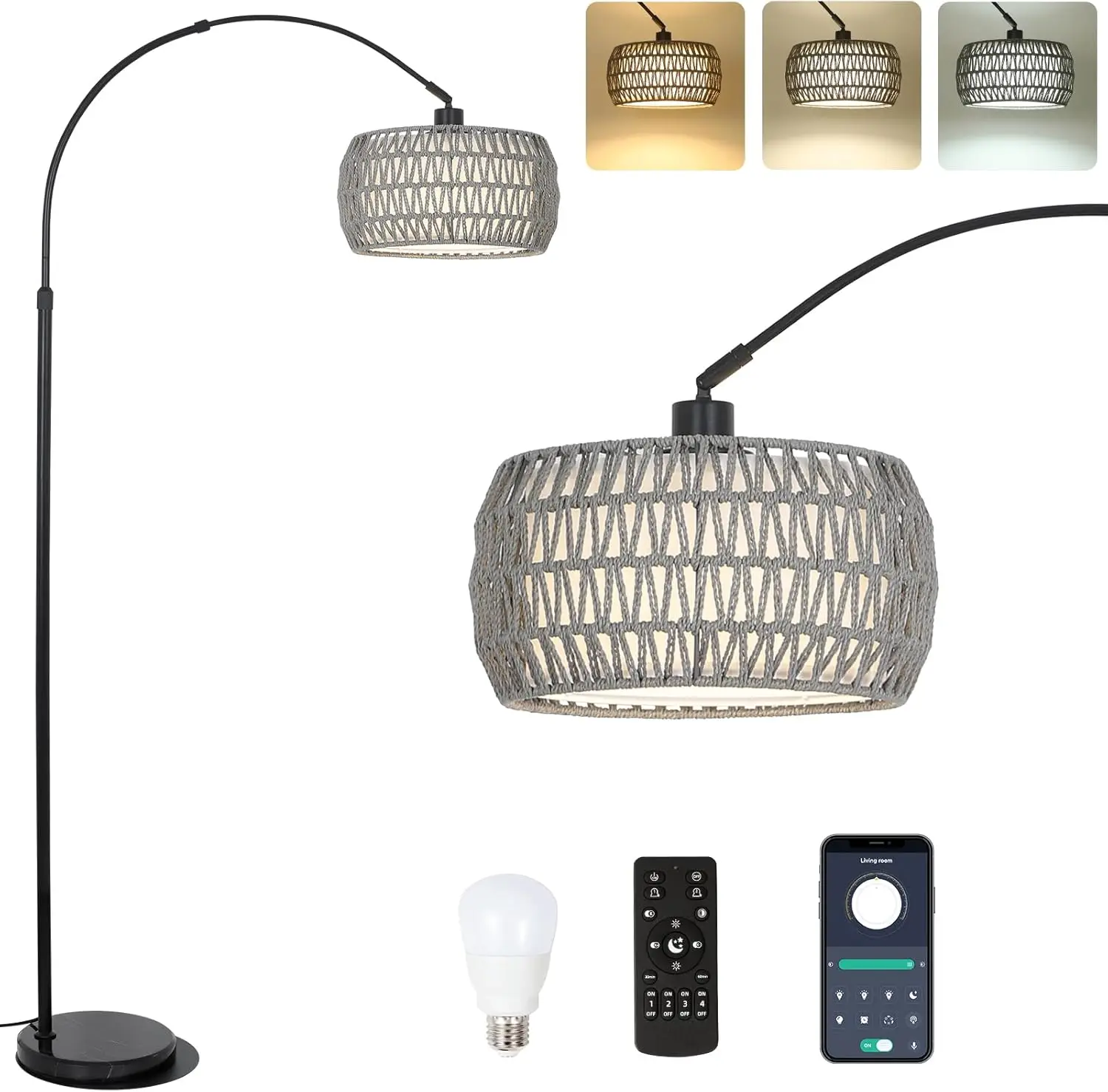
For home lighting inspired by these technologies, 3-light arc floor lamp designs offer versatile illumination options based on continuous lighting principles.
What Are Common Uses of Arc Floor Lamps in Interior Design?
Modern arc floor lamps apply the principles of continuous illumination in stylish designs perfect for home and office environments. While they don’t use actual arc lamp technology, they borrow the graceful curved form that was originally designed to position traditional arc lights at optimal heights.
Arc floor lamps serve dual purposes in interior design, functioning as both practical light sources and striking design elements. Their distinctive curved stems create visual interest while allowing light to be positioned directly over seating areas, reading spots, or dining tables without obstructing sightlines or conversation.
These versatile fixtures excel at providing targeted illumination where it’s most needed. In living rooms, they can arch over sofas to provide perfect reading light. In dining areas, they create intimate lighting while keeping table space clear. Their adjustable designs make them adaptable to various room configurations and lighting needs.
Brass Arc Floor Lamp, Contemporary Arc Floor Lamp, LED Arc Floor Lamp
Price range: $490.72 through $522.04 Select options This product has multiple variants. The options may be chosen on the product pageChrome Arc Floor Lamp, LED Arc Floor Lamp
Price range: $304.95 through $1,210.40 Select options This product has multiple variants. The options may be chosen on the product pageContemporary Arc Floor Lamp, Large Arc Floor Lamp, Marble Base Arc Floor Lamp
$224.94 Select options This product has multiple variants. The options may be chosen on the product pageContemporary Arc Floor Lamp, Silver Arc Floor Lamp
$459.99 Select options This product has multiple variants. The options may be chosen on the product pageLED Arc Floor Lamp, Rattan Arc Floor Lamp
$313.58 Select options This product has multiple variants. The options may be chosen on the product page3 Light Arc Floor Lamp, Dimmable Arc Floor Lamp
Price range: $162.86 through $246.50 Select options This product has multiple variants. The options may be chosen on the product page
The complete arc floor lamp guide offers additional insights on selecting the perfect fixture for your space, considering factors like room size, ceiling height, and existing décor elements.
Understanding the technical principles behind different lighting technologies helps inform better choices for both specialized applications and everyday lighting needs, creating spaces that are both functional and beautiful.

